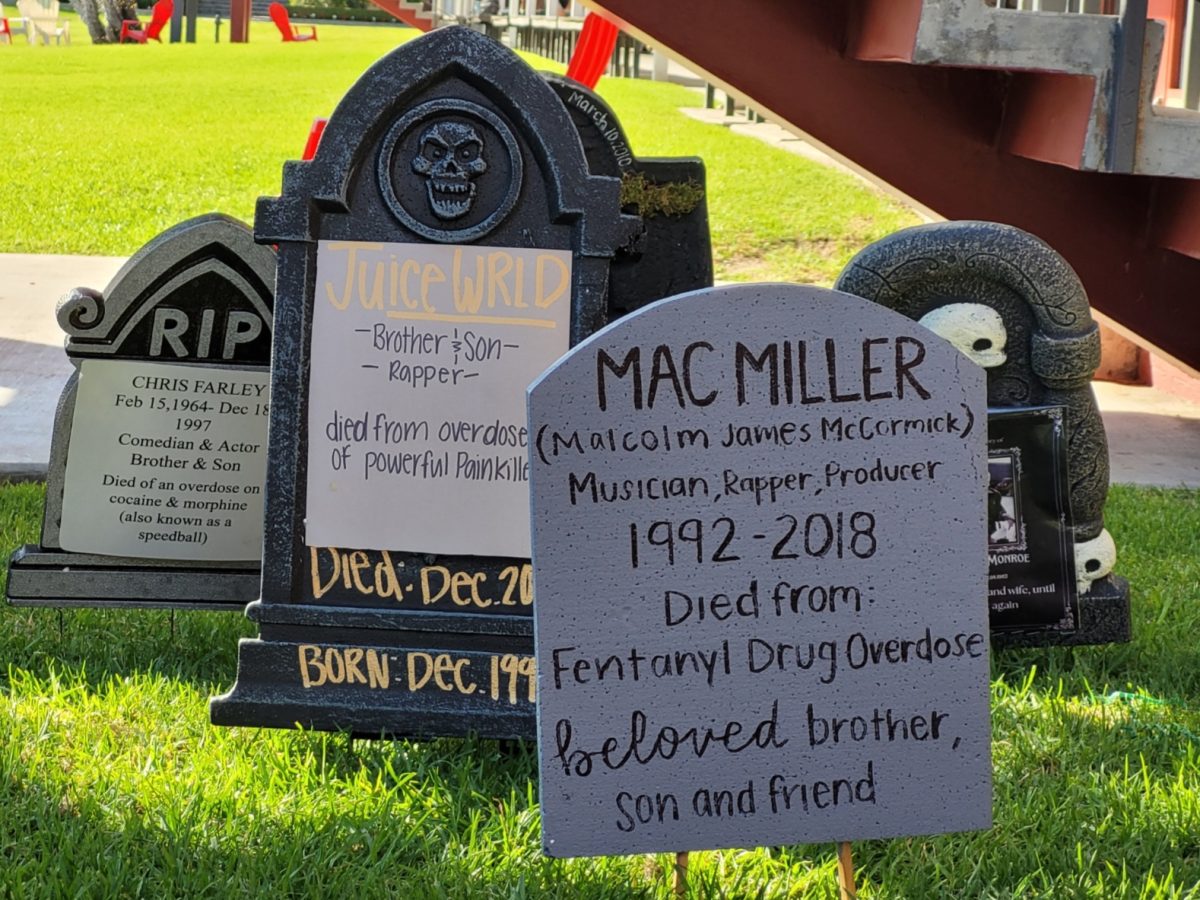It’s Red Ribbon Week, Royals—the week dedicated to preventing drug and alcohol use, especially by students; abuse of illegal substances like fentanyl, heroin, cocaine, ecstasy (MDMA), and methamphetamine, to name a few, can be disastrous for teens.
First of all, drugs can prevent athletes from receiving college scholarships. Varsity volleyball player Maddie Lambros ‘26 commented, “I think it’s important for serious athletes to avoid drug use because deciding to use drugs one time could affect your whole life. Colleges can decide to stop looking at you, and one decision could ruin your athletic career.” Don’t destroy years of hard work over one mistake; just say no to drugs.
Similarly, Rosary Principal Mr. Basford encouraged Royals to make smart choices: “Many employers conduct background checks, and having a history of underage drinking or legal issues can make it challenging to secure certain jobs, especially in roles that require trust, responsibility, and professionalism. In summary, underage drinking can have a ripple effect on your future goals and reputation, potentially limiting your opportunities and damaging your plans. It’s essential to make responsible choices and consider the long-term consequences of your actions.”

In addition to affecting sports, drugs have terrible consequences on developing teen brains. Anatomy & Physiology teacher Ms. Lanctot shared, “Adolescent women’s bodies continue to grow until around age 14-16, depending on genetics. Unlike your body, your brain grows until you’re 25, gains knowledge easily, and creates new pathways for information to flow, which allows new movement patterns, like kicking a ball a certain way. This time is integral in fine-tuning the pre-frontal cortex, which is involved in rational decision making, actions, and emotions. Drug use and abuse in this critical time of brain development can lead to delayed or altered decision making abilities, increased emotionality, and a delay or disfunction in emotional, cognitive, and social maturation.”
AP Psychology teacher Mrs. Ward further explained drugs’ neurological effects, commenting specifically on the popular drug marijuana: “People don’t think that marijuana is addictive, but it is—extremely. It can change your temperament when consumed on a daily basis, and you become more volatile the longer you take it. It’s almost as hard to quit as opioids, which are also extremely dangerous because they are so easily prescribed.”
Mrs. Ward also taught her class about three main categories of drugs: depressants, stimulants, and hallucinogens. Depressants like alcohol slow brain activity, stimulants like caffeine and nicotine speed up bodily functions, and hallucinogens create sensory encounters like near-death experiences. Be mindful of what substances you are consuming; too much can severely weaken your body instead of helping it.
With Halloween next week, be mindful of candy laced with drugs; pills like fentanyl can accidentally be mixed into colorful round candies like SweeTarts or Smarties. To avoid any issues, the Times of San Diego recommends only trick-or-treating at well-lit homes as well as going in groups. Kids are often not the intended target of drug dealers, but still be careful.

While drugs are extremely harmful, there are some other substances teens may encounter that can have the potential to be just as destructive.
Energy drinks are a commonly consumed beverage amongst teenagers as a way to offset lack of sleep or tiredness. Rosary’s athletic trainer, Ms. Sutcliffe, speaks on caffeine and its effects: “As an athletic trainer, I’ve noticed that energy drinks have become increasingly popular in the athletic setting with both adolescents and adults alike, especially with certain brands targeting their marketing toward athletic populations, like Celsius. One thing that I think everyone should be aware of with energy drinks is just how much caffeine they contain; most contain double the amount of an 8 oz cup of coffee or tea.”
She adds, “Additionally, most energy drinks are labeled as dietary supplements, not foods, so they are not required to meet the same standards and regulations as other food products…One example of this is Celsius, which contains guarana extract, a substance banned by the NCAA. Additionally, drinking too much caffeine, usually around 500 mg, or just 2-3 energy drinks may result in a positive drug test as well… For adults, the FDA recommends 400 mg as the limit of caffeine. This is about the same as 2 energy drinks.”
Ms. Sutcliffe continues, “However, I think is important to note that certain groups, including those with heart conditions, anxiety, and most notably, children and adolescents (teenagers) should certainly limit their caffeine intake as they will be more impacted by the effects of caffeine, including nervousness, shaking, rapid heartbeat, and upset stomach, among other things…I personally have experienced otherwise healthy athletes suffer from heart problems such as heart palpitations and cardiac arrest directly resulting from overconsumption of energy drinks. Although energy drinks are marketed toward the athletic population, I do not believe that athletes, especially adolescent athletes, should be drinking them.”
Even worse than caffeine is alcohol, according to the American Addiction Centers, 70% of teens under the age of 18 have consumed alcohol. This is extremely alarming statistic given that alcohol can be very addictive, especially to undeveloped brains, and has a number of dangerous side effects including poor judgment (which can lead to criminal behavior, sexual or physical assault, etc.), abuse of other substances (like drugs), alcohol poisoning, impaired brain function even after drinking, liver failure, and in extreme cases, death.

Finally, nicotine in its many forms is certainly not a rare sight on many high school and college campuses. Popular nicotine products amongst teenagers include e-cigarettes and various forms of vapes, which can be mixed with marijuana or include a high content of nicotine. Though some teens have been misled by the alluring idea that vapes do not contain harmful tobacco, in actuality, vapes contain a dangerous chemical compound, nicotine, that comes from tobacco.
The average vape contains up to 18 mg of nicotine versus an average cigarette which contains anywhere from 10-12 mg of nicotine. Nicotine is very addictive, and withdrawal symptoms can be violent, leading to a constant need for, or dependence on nicotine. In addition, nicotine has long-term effects on brain development, because of its dopamine surges, regular life becomes less enjoyable, while addiction damages the brain circuits, causing memory loss, loss of self-control, learning issues, and even anxiety.
Although all the risks teens face today seem overwhelming and at times scary, Rosary is doing its part to ensure that students do not fall into the trap of unhealthy substance abuse. By conducting random drug tests, celebrating Red Ribbon Week, and educating Royals in various ways throughout campus, the Rosary community is doing a great job of raising awareness about the incredible dangers drugs, alcohol, and vaping pose to the health and future of students.









